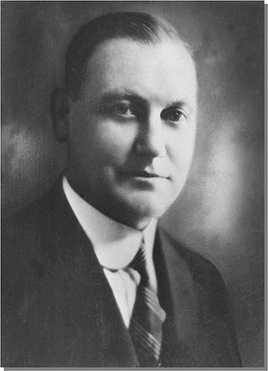Monroe Dunaway Anderson
Monroe Dunaway Anderson (1873–1939) was an American businessman and philanthropist, best known for his significant contributions to the field of medicine and the establishment of the Texas Medical Center in Houston, Texas.
Early Life[edit | edit source]
Monroe Dunaway Anderson was born on June 29, 1873, in Jackson, Tennessee. He was the son of James Wisdom Anderson and Ellen Dunaway Anderson. Anderson grew up in a modest household and displayed a keen interest in business from a young age.
Business Career[edit | edit source]
In 1904, Anderson co-founded the Anderson, Clayton and Company with his brother-in-law, Will Clayton. The company specialized in the cotton trade and quickly grew to become one of the largest cotton merchants in the world. Anderson's business acumen and strategic vision were instrumental in the company's success.
Philanthropy[edit | edit source]
Monroe Dunaway Anderson was a dedicated philanthropist. In 1936, he established the M.D. Anderson Foundation with an initial endowment of $300,000. The foundation aimed to support various charitable causes, with a particular focus on healthcare and medical research.
Texas Medical Center[edit | edit source]
One of Anderson's most notable contributions was his role in the creation of the Texas Medical Center. The M.D. Anderson Foundation provided substantial funding for the establishment of the center, which has since grown to become one of the largest and most prestigious medical complexes in the world. The University of Texas MD Anderson Cancer Center, named in his honor, is a leading institution in cancer research and treatment.
Legacy[edit | edit source]
Monroe Dunaway Anderson's legacy continues to impact the fields of medicine and healthcare. His philanthropic efforts have left an enduring mark on the Texas Medical Center and the broader medical community. Anderson's vision and generosity have helped advance medical research and improve patient care for generations.
Death[edit | edit source]
Monroe Dunaway Anderson passed away on August 6, 1939, in Houston, Texas. He is remembered as a pioneering businessman and a compassionate philanthropist whose contributions have had a lasting impact.
See Also[edit | edit source]
- Texas Medical Center
- University of Texas MD Anderson Cancer Center
- Anderson, Clayton and Company
- Philanthropy
References[edit | edit source]
External Links[edit | edit source]
Search WikiMD
Ad.Tired of being Overweight? Try W8MD's physician weight loss program.
Semaglutide (Ozempic / Wegovy and Tirzepatide (Mounjaro / Zepbound) available.
Advertise on WikiMD
|
WikiMD's Wellness Encyclopedia |
| Let Food Be Thy Medicine Medicine Thy Food - Hippocrates |
Translate this page: - East Asian
中文,
日本,
한국어,
South Asian
हिन्दी,
தமிழ்,
తెలుగు,
Urdu,
ಕನ್ನಡ,
Southeast Asian
Indonesian,
Vietnamese,
Thai,
မြန်မာဘာသာ,
বাংলা
European
español,
Deutsch,
français,
Greek,
português do Brasil,
polski,
română,
русский,
Nederlands,
norsk,
svenska,
suomi,
Italian
Middle Eastern & African
عربى,
Turkish,
Persian,
Hebrew,
Afrikaans,
isiZulu,
Kiswahili,
Other
Bulgarian,
Hungarian,
Czech,
Swedish,
മലയാളം,
मराठी,
ਪੰਜਾਬੀ,
ગુજરાતી,
Portuguese,
Ukrainian
Medical Disclaimer: WikiMD is not a substitute for professional medical advice. The information on WikiMD is provided as an information resource only, may be incorrect, outdated or misleading, and is not to be used or relied on for any diagnostic or treatment purposes. Please consult your health care provider before making any healthcare decisions or for guidance about a specific medical condition. WikiMD expressly disclaims responsibility, and shall have no liability, for any damages, loss, injury, or liability whatsoever suffered as a result of your reliance on the information contained in this site. By visiting this site you agree to the foregoing terms and conditions, which may from time to time be changed or supplemented by WikiMD. If you do not agree to the foregoing terms and conditions, you should not enter or use this site. See full disclaimer.
Credits:Most images are courtesy of Wikimedia commons, and templates Wikipedia, licensed under CC BY SA or similar.
Contributors: Prab R. Tumpati, MD


